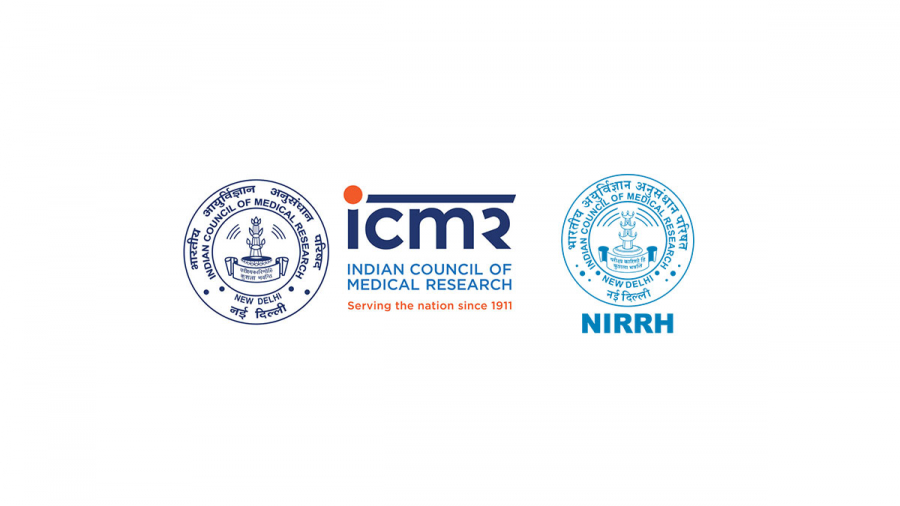ICMR alongwith National Institute for Research in Reproductive Health(NIRRH), have released Guidance for Management of Pregnant Women in COVID-19 Pandemic. This guidance is prepared on basis of guidelines from international agencies like CDC, ACOG, RCOG, FOGSI and Lancet publications. The guidelines are for healthcare facilities providing obstetric care for pregnant patients with confirmed novel coronavirus disease (COVID-19) or pregnant Persons Under Investigation (PUI) in obstetric healthcare settings including obstetrical triage, labour and delivery, recovery and inpatient postpartum settings. It also talks about:
Effect of COVID-19 on Pregnancy which itself alters the body’s immune system and response to viral infections in general, the risks of COVID 19 to the mother appear to increase in particular during the last trimester of pregnancy
Transmission from mother to baby vertical transmission is probable, although there are no recorded cases of vaginal secretions and no cases of breast milk being tested positive for COVID-19.
General Guidelines for Obstetric Health Care Providers : Health care practitioners should register for all women admitted to with confirmed COVID-19 infection in pregnancy. Pregnant women should be advised to increase their social distancing to reduce the risk of infection and practice hand hygiene. A single, asymptomatic birth partner should be permitted to stay with the woman.
Staff wearing appropriate PPE and be provided with a surgical face mask.
Specific Obstetric Management Considerations: For all pregnant women obtain the following information: A detailed travel history, History of exposure to people with symptoms of COVID-19 ,Symptoms of COVID-19 etc.
Do’s and Don’ts for Obstetric care providers in COVID-19 Pandemic: If a woman meets criteria she should be treated as though she has confirmed COVID-19. Obstetric management in order to test for COVID-19 must not be delayed. If ultrasound equipment is used, it should be decontaminated after use and etc.
Management of COVID-19 in Pregnancy: Women should be advised to attend routine antenatal care, at 12, 20, 28 and 36 weeks of gestation; Should take own transport or call 108 when needed to visit health centre; Ultrasound services for foetal growth surveillance is recommended after 14 days following the resolution of acute illness and etc.
Intrapartum Care: Full maternal and foetal assessment should be conducted to include: Assessment of the severity of COVID-19 symptoms; Maternal observations including temperature, respiratory rate & oxygen saturations; Confirmation of the onset of labour, as per standard care; Electronic foetal monitoring using cardiotocograph (CTG) and etc..
Care in Labour: Aim to keep oxygen saturation >94%; The woman has signs of sepsis, investigate and treat as per guidance on sepsis in pregnancy, but also consider active COVID-19; Continuous electronic foetal monitoring in labour is recommended and etc.
Management of Patients with COVID-19 Admitted to Critical Care: Chest X-ray and CT of the chest, Chest imaging, especially CT chest, is essential for the evaluation of the patient with COVID-19 and should be performed when indicated,hourly observations and suitability of foetal heart rate monitoring should be considered on an individual basis.
Postnatal Management: A separate isolation room should be available for the infant while they remain a PUI. The facemask should remain in place during contact with the new-born. These practices should continue while the mother is on transmission-based precautions in a healthcare facility.
Breastfeeding: Mothers who intend to breastfeed should be provided with Breast pump should be provided. Mother should put on a facemask and practice hand hygiene before each feeding.
Hospital Discharge: Discharge for postpartum women should be negative and maternal for COVID 19 and foetal/neonatal condition should be stable.
General Advice for Obstetric/Emergency Gynaecology Theatre
Anaesthesia and Advice regarding Personal Protective Equipment for Caesarean Birth: All staff in theatre should then don PPE with a fluid-resistant surgical mask (FRSM) and eye protection.
Hand Hygiene Hand hygiene includes use of alcohol-based hand sanitizer that contains 60% to 95% alcohol before and after all patient contact, before putting on and upon removal of PPE, including gloves.
Personal Protection Equipment for Management of Suspected/Confirmed : Respiratory protection; Triple layered surgical mask; N95 facemasks; Eye protection; Goggles or face shield; Body protection; Hand protection and etc.
Use of Personal Protective Equipment: Steps in Wearing PPE (Donning); Steps in Removing PPE (Doffing)
 Cart is empty
Cart is empty



